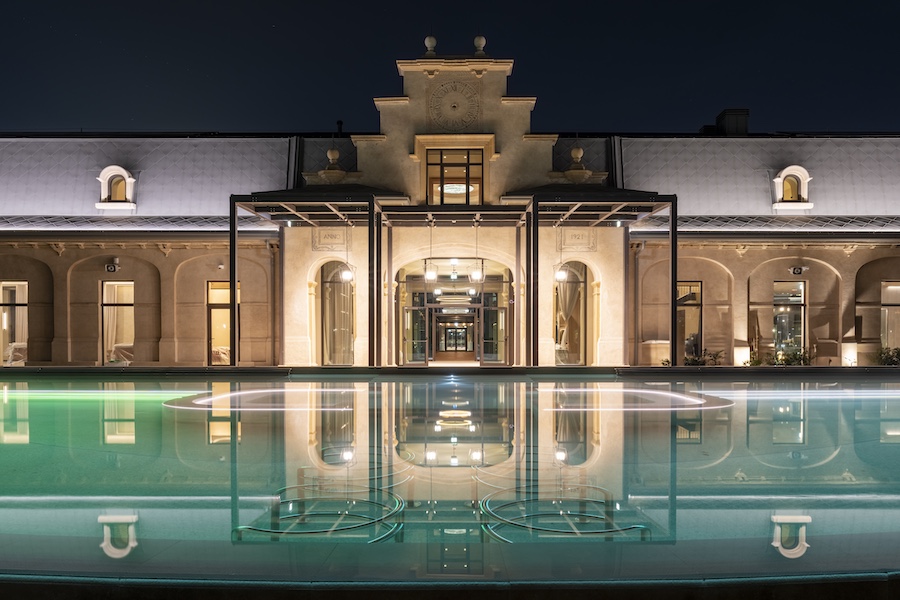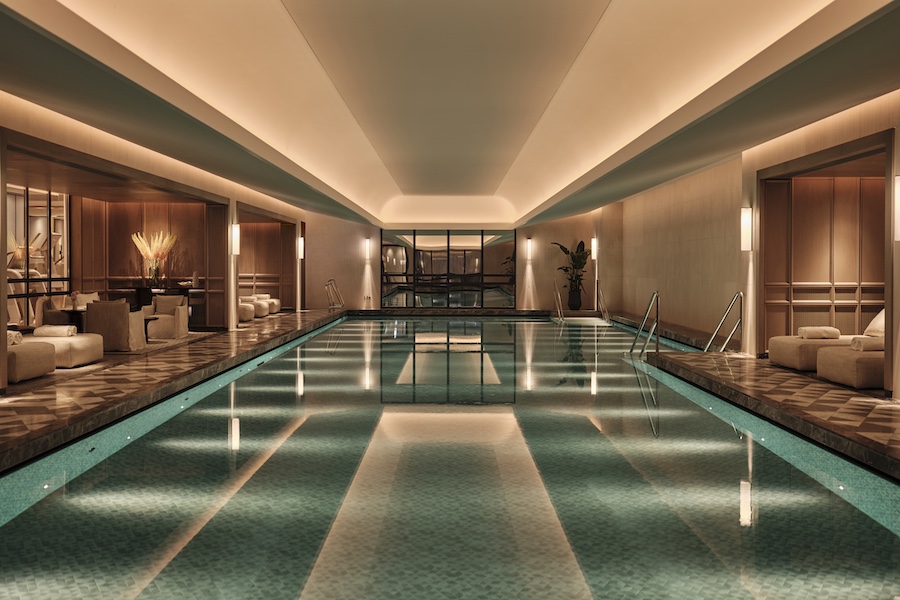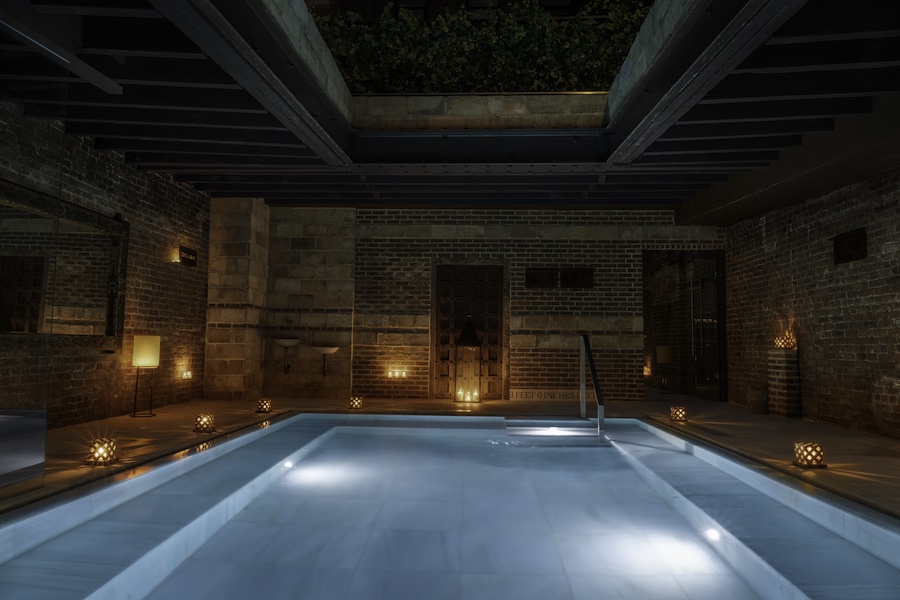THDP has unveiled the interiors of De Montel – Terme Milano, a 172,200-square-foot urban thermal spa set within a restored 1920s Art Nouveau building in Milan’s San Siro district.
The project is part of a decade-long revitalization of the former Scuderie De Montel, a historic horse stable. Originally designed by Italian architect Vietti Violi for the De Montel banking family, the stables were a celebrated architectural gem and equestrian hub in early-20th-century Milan.
After falling into disuse in the 1970s, the structure languished for decades until a winning proposal through the international Reinventing Cities competition sparked its transformation into a low-emission thermal spa fueled by a deep artesian well.
Now, its wellness amenities span thermal pools, saunas, hammams, beauty stations, and treatment rooms, while two F&B areas designed as indoor terraces offer dining experiences year-round.
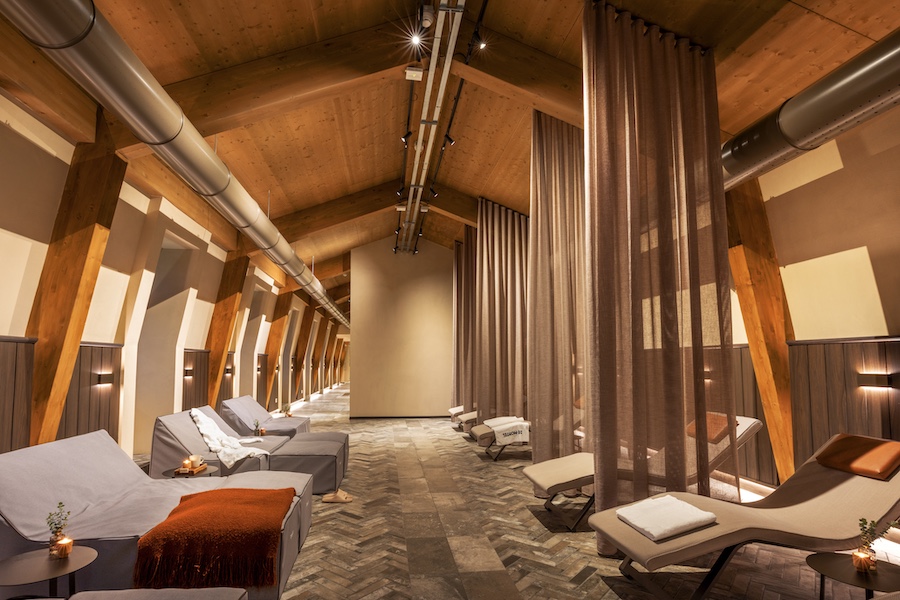
Guiding design pillars for De Montel – Terme Milano
THDP’s design honors the site’s past while creating a sensorial experience centered around three conceptual pillars: the elegance of Milanese Art Nouveau, the equestrian soul of the original stables, and the healing properties of thermal water.
Custom furnishings and bespoke lighting—crafted from iron, glass, and leather—evoke the building’s Art Nouveau roots and its equine history. Former water troughs were repurposed into travertine-effect stoneware panels, and subtle references to saddlery appear in robe hooks and seating details.
Throughout the spa, water becomes both subject and material. Hand-blown Venetian glass discs cascade beneath a grand skylight, moss-lined showers mimic grottos, and floating glass bubbles illuminate staircases.
Other sensory elements include salt panels, textured ceramics, and travertine floors that nod to Roman bathing traditions. Even lighting plays a role, replicating refracted light patterns on water.
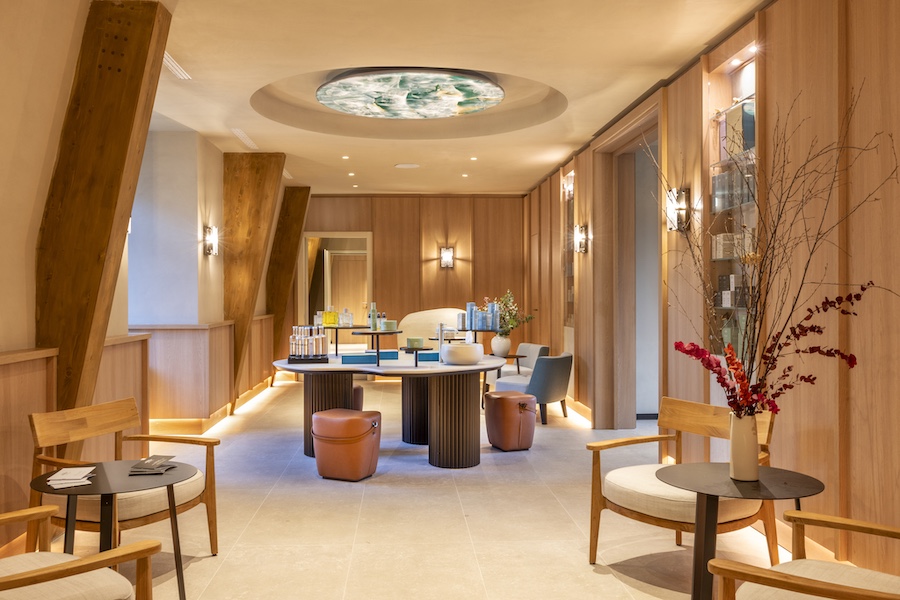
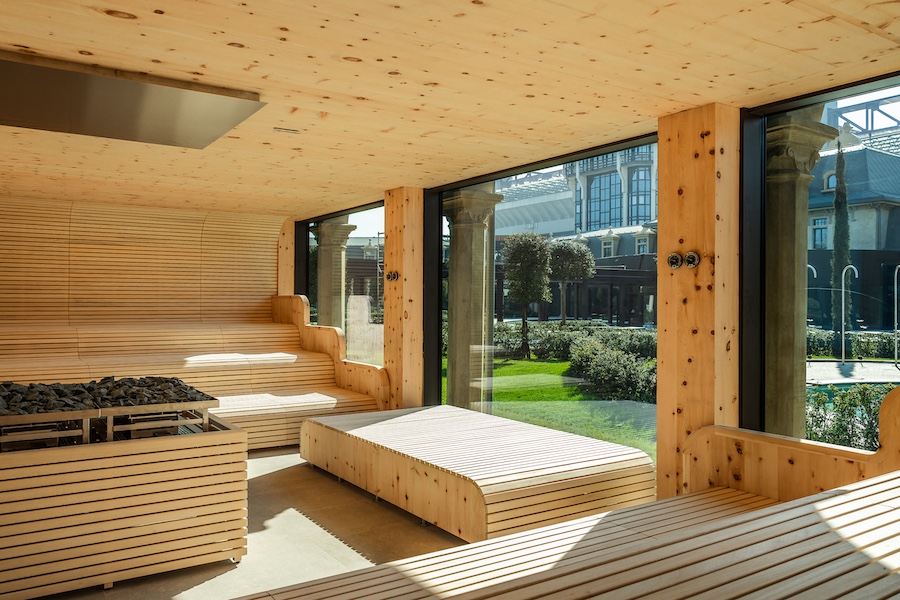
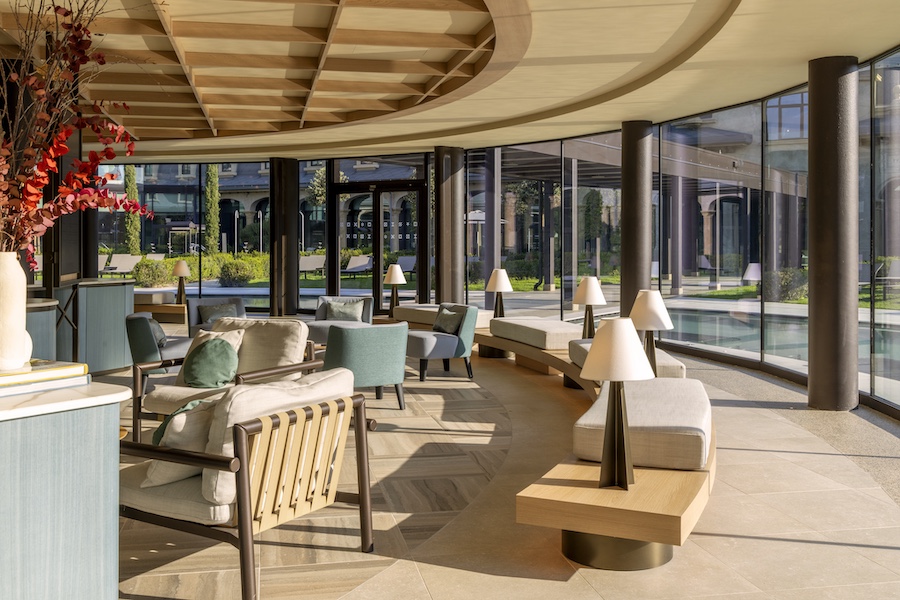
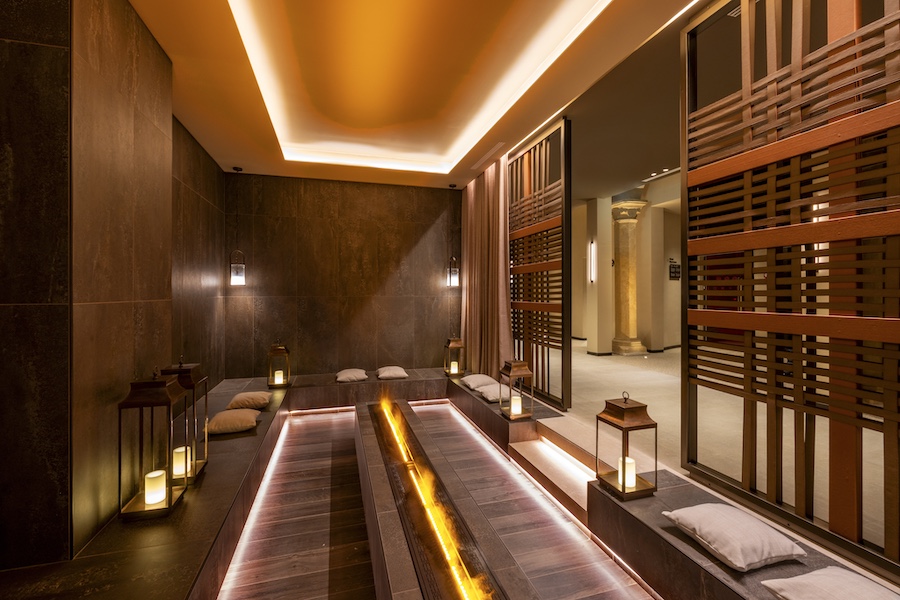
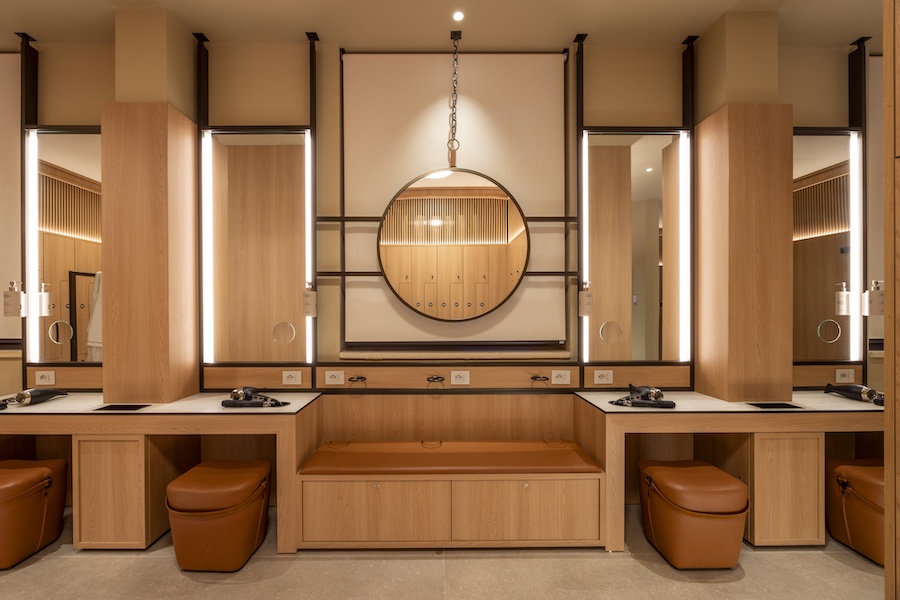
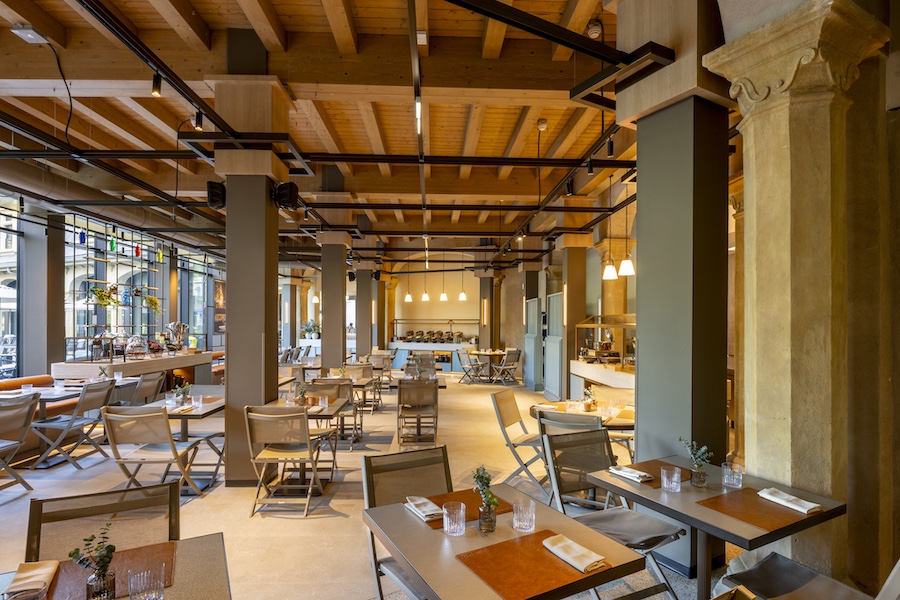
More from HD:
High-End Residences Are the Next Frontier of Living Well
What I’ve Learned Podcast: Chantell Walsh, Strategic Hotels & Resorts
5 Designers Get Real About Gen Z Misconceptions

